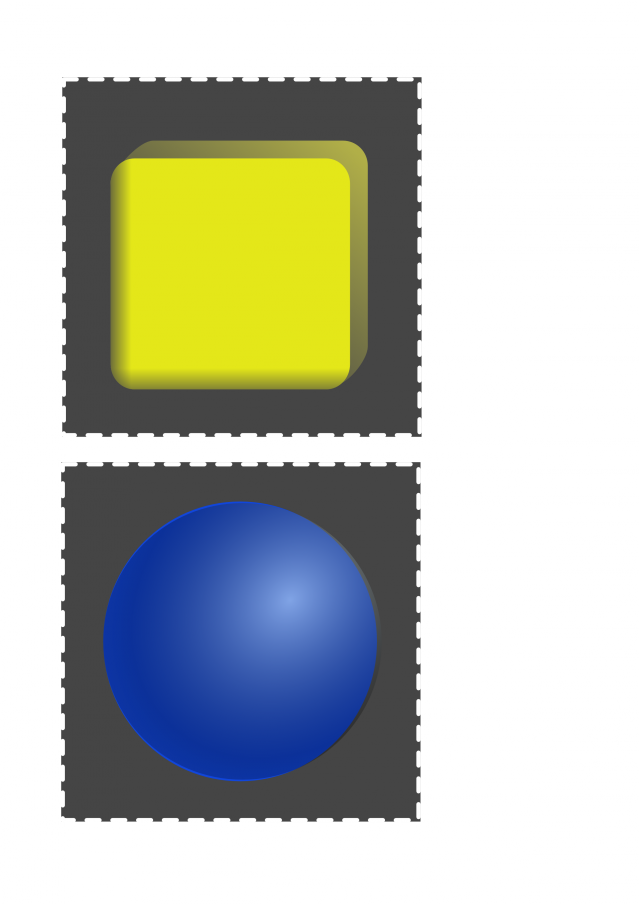Bullying
Does Your Baby Show a Preference for Victims or Aggressors?
Try this simple experiment, adapted from a June 2013 study, on your own child.
Posted July 25, 2013
My sons – ages 1 and 3 – are my favorite science projects.
I love watching them and trying to figure out how their little minds work, and it's thrilling to be able to witness the emergence of their unique personalities.
One way I've gotten to know them better is by conducting little experiments on them – no, not the kind that involve caustic chemicals or radiation bursts, but the kind that are routinely employed in child development research.
In my book Experimenting With Babies: 50 Amazing Science Projects You Can Perform on Your Kid, I have taken published academic studies in various fields of child development – primitive reflexes, motor skills, cognitive development, language development, etc. – and adapted them so that parents can perform them on their own babies from the comfort of their living room, with no special equipment needed.
On this Psychology Today blog, I'm going to present similar adapted experiments that deal specifically with psychology, such as social or emotional development. I'll also post news and research related to child development, with an emphasis on items that help parents better understand how their children's minds work.
Below is the first adapted experiment. It's based on a June 2013 study in the journal PLoS ONE.
"Signs of Sympathy for Bullying Victims"
Age range: About 10 months old
Research areas: Social and emotional development
The Experiment
Prior to conducting this experiment, you'll need to print out the following two images, one depicting a blue sphere and the other depicting a yellow cube. Cut each of them along the dotted lines.

During a time when your baby is alert and not fussy, familiarize her with the following 20-second animated video by playing it for her five or six times, preferably in full-screen mode to reduce any distractions.
Next, hold up the two pictures of the objects, one in each hand, and encourage your baby to choose one of them.
The Hypothesis
Your baby is more likely to choose the yellow cube (the "victim" in the familiarization video) than the blue sphere (the "aggressor" in the familiarization video).
The Research
In the June 2013 study, preverbal 10-month-olds were familiarized with a video like the one above, in which one object appeared to be pushing or hitting another object. (In the original study, they counterbalanced colors and shapes to make sure those factors didn't influence the results.)
They were then presented with real objects resembling those depicted in the video and prompted to reach for one.
The researchers found that the babies strongly preferred the "victim" object over the "aggressor" object.
But to determine whether the babies were really exhibiting sympathy for the victim, and not just showing fear of the aggressor, they ran a related experiment in which a third "neutral" object was incorporated into the video. This object interacted with neither the victim nor the aggressor. When the babies were then given the opportunity to choose between the victim and the neutral object, they strongly preferred the victim. This suggests that the babies were demonstrating sympathy for the victim, rather than just exhibiting a fearful response to the aggressor.
So what's going on in babies' heads to trigger this sympathy for the victim?
Well, in order to identify one of the objects as the victim and the other as the aggressor, they need to understand things such as goal directedness (what is each object trying to do?) and causality. They also need to understand that the blue sphere's behavior is negative, and the researchers suspect that babies may have acquired this understanding based on parents' and siblings' reaction to hitting behavior.
One thing about this study that bears mentioning is that although the babies strongly preferred the victim when given a choice between it and the aggressor (or it and the neutral object), they didn't appear to exhibit more sophisticated sympathetic responses, such as trying to comfort the victim.
Yet even though a 10-month-old's sympathetic response may be rudimentary, the results of this study suggest that sympathy is beginning to emerge as part of their social-emotional development by this point.
The Takeaway
Even before your baby is able to speak, it appears that she's catching on to what constitutes bullying behavior, and she doesn't like it.
That doesn't necessarily mean that she'll never exhibit aggressive behavior herself, since impulse control is relatively low during the first few years of life, but it does mean that in at least a basic way, she understands that hitting and pushing are not acceptable behaviors.
As she grows older, you can help her further develop her sympathetic response to the victim by appealing to her sense of fairness (which emerges big-time in the preschool years) and by trying to help her better understand the emotional states of others using prompts such as, "How would you feel if ..."
Source
The experiment above was adapted from:
Kanakogi Y., Okumura Y., Inoue Y., Kitazaki M., Itakura S. Rudimentary Sympathy in Preverbal Infants: Preference for Others in Distress. PLoS ONE 8(6): e65292. June 2013.
The video included in the experiment is from the same source. The images are adapted from the video.
The study and related media are distributed under the terms of the Creative Commons Attribution License, which permits unrestricted use, distribution, and reproduction in any medium, provided the original author and source are credited.




